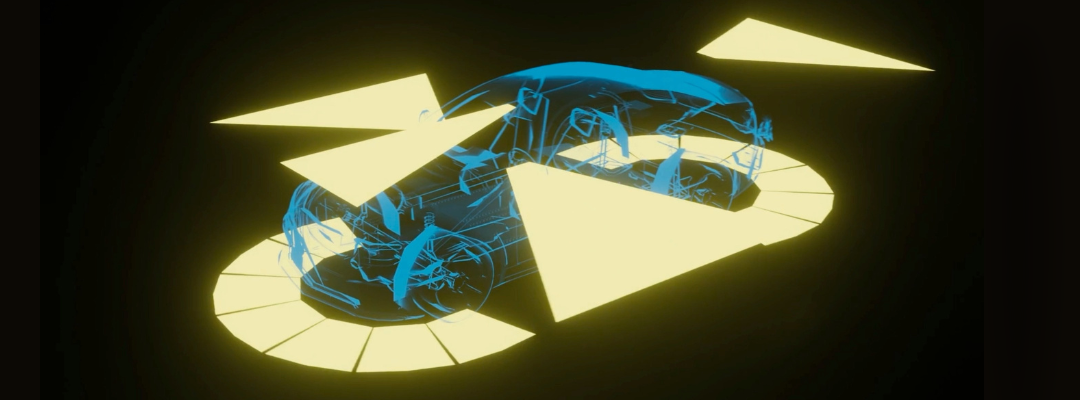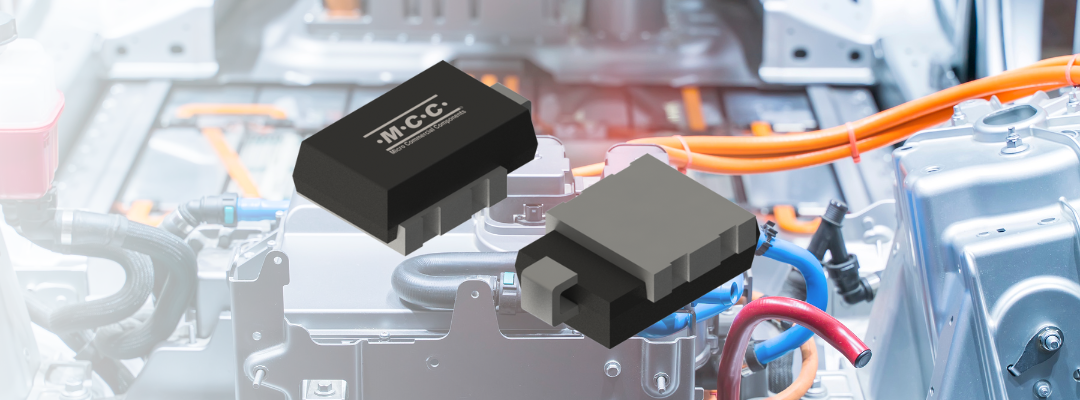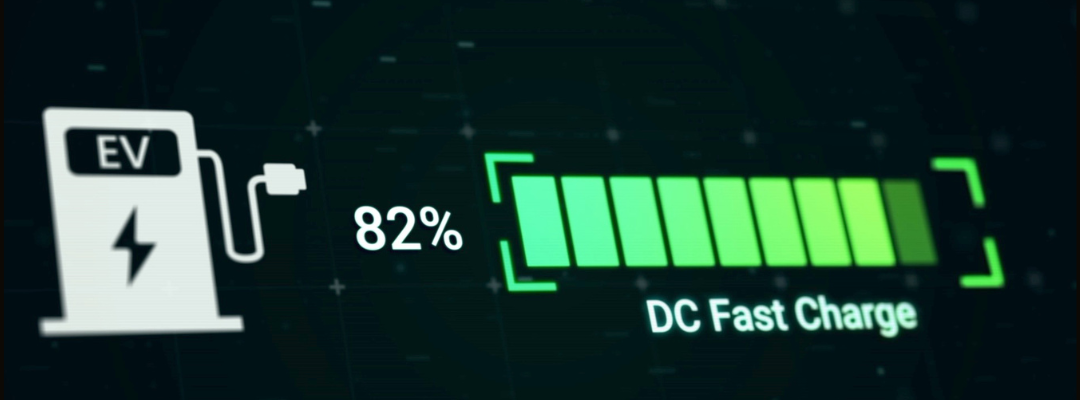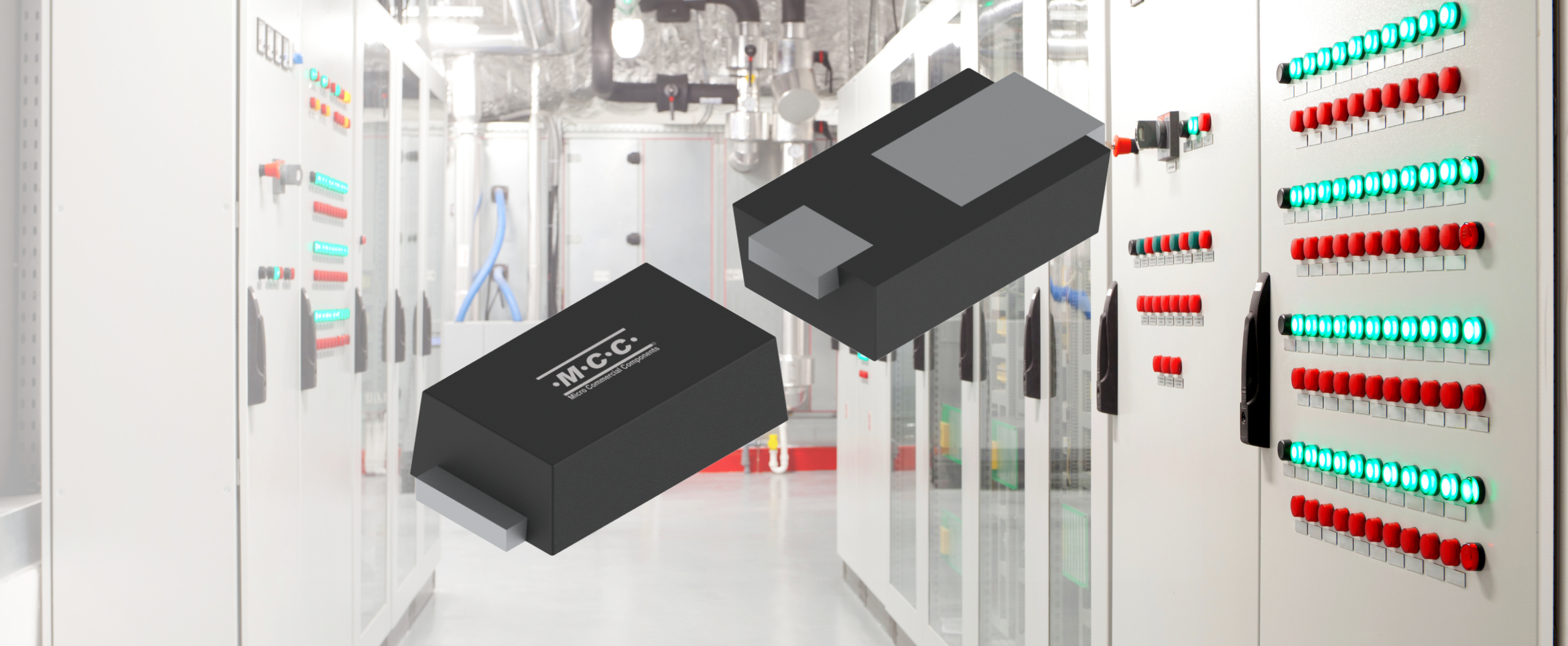Key Considerations for Convenient Auto Technologies
Modern vehicles are equipped with several advanced features to enhance safety and the overall driving experience. Infotainment systems bridge the gap between essentials and modern luxuries.
From old-school AM/FM broadcast connections to advanced driver assistance systems (ADAS) and instrument clusters, infotainment modules are integrated with several features to provide the ultimate command center. In-vehicle infotainment options may include some or all of the following:
- Navigation
- Touchscreen display
- Backup camera screen
- Digital and analog knobs and buttons
- Climate control
- Bluetooth
- Voice recognition/natural language processing
- Wi-Fi
- Smartphone compatibility
- In-cabin cameras & sensors
- Rear-seat entertainment systems
How do infotainment systems work?
Power from the vehicle battery is safely converted to the appropriate DC voltage. Protective elements are included to prevent reverse battery polarity, as well as transients and overvoltage.
Once the DC power is converted to the appropriate voltage, power staging sends the information to the main microcontroller or head unit. This integral element includes a microprocessor, memory, and other components needed to run system software.
A display module serves as the user interface of the system, which shows navigation instructions, maps, rear view camera view, videos, radio stations, and other information. Users interact with the infotainment system using a variety of inputs, which may include buttons, dials, and touchscreens.
A combination of software components, including the operating system, infotainment software, and connectivity interfaces (CAN, LIN, FlexRay, ethernet) and a radio receiver antenna help safely transmit inputs to the main microcontroller.
Speakers, displays, haptic actuators, and other outputs are activated using output drivers, and feedback is communicated to the driver or user via the display.
Innovative infotainment systems must also communicate with safety and convenience features throughout the vehicle, including the instrument cluster, ADAS, and other integral applications
Automotive Infotainment Block Diagram
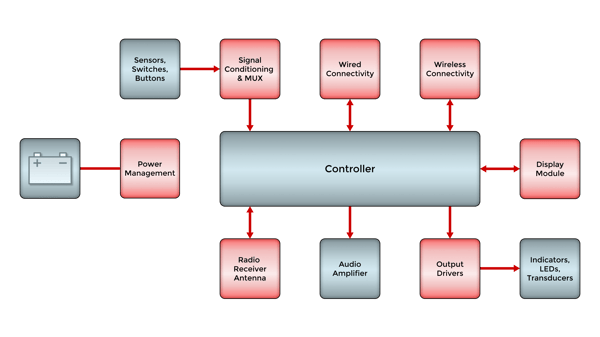
Design Considerations
Being able to run multiple systems at once in limited spaces is only one of the challenges engineers may face when designing infotainment systems. Design engineers should consider:
- Overvoltage protection - safeguards should be in place to protect infotainment systems from voltage spikes and surges
- Transient protection - many factors can cause transient voltage spikes — from lightning strikes to EMI — so TVS or other components should be used to suppress them
- ESD protection - electrostatic discharge can damage sensitive infotainment components and should be considered when designing circuits and systems
- Power staging - ensuring the right voltage and current levels are delivered to the various infotainment components is essential
- Electromagnetic capability - making sure the infotainment system doesn’t interfere with other vehicles and is not susceptible to EMI from other devices is critical
- High-current capability- must be able to process enough power to run multiple systems at once, including large displays that may require significant energy
- Component size - small, lightweight components are ideal for infotainment systems to help reduce impact on vehicle performance while leaving room for other necessary electronic elements within the cabin
- Reliability in harsh conditions - when safety and communication with the driver are concerned, there’s no room for component failure amid extreme conditions
- Applicable industry standards - infotainment components should meet all industry requirements and standards, including AEC-Q101
In addition to the semiconductor considerations listed above, engineering challenges such as safety and security from cyberattacks are important design factors.
Recommended Products
Power Management |
||
TVS: SMF24AQ
|
TVS: SMF36AQ
|
TVS: SMA6J24AQ
|
TVS: SMA6J36AQ
|
TVS: SMBJ24AQ
|
TVS: SMBJ36AQ
|
TVS: SMCJ24CAQ
|
TVS: SMCJ36AQ
|
|
Power Management |
||
Schottky Barrier Rectifier: SMD34PLQ
|
Schottky Barrier Rectifier: SMD36PLQ
|
|
Schottky Barrier Rectifier: SK36AQ-L
|
Schottky Barrier Rectifier: SK36BQ-L
|
Schottky Barrier Rectifier: SK36Q
|
Wired Connectivity |
||
ESD Protection: ESD1524D3BHE3A
|
ESD Protection: ESD24VD3BHE3
|
ESD Protection: ESD27VD3BHE3
|
ESD Protection: ESDSBL5V0D5BHE3
|
ESD Protection: ESDULC5V0LBHE3
|
ESD Protection: ESDULC3V3LBHE3
|
Wireless Connectivity |
||
ESD Protection: ESDSBL5V0D5BHE3
|
ESD Protection: ESDULC5V0LBHE3
|
ESD Protection: ESDULC3V3LBHE3
|
Signal Conditioning & MUX |
||
ESD Protection: ESD12VD3BHE3
|
ESD Protection: ESDSB5V0D3BHE3
|
|
TVS: SMF12AQ
|
TVS: SMF5.0AQ
|
|
Display Module |
||
ESD Protection: ESDSBL5V0D5BHE3
|
ESD Protection: ESDULC5V0LBHE3
|
ESD Protection: ESDULC3V3LBHE3
|
Output Drivers |
||
MOSFET: 2N7002KDWBQ
|
MOSFET: SI2102AHE3
|
MOSFET: SI2310AHE3
|
Radio Receiver Antenna |
||
ESD Protection: ESDLC8V0LBHE3
|
ESD Protection: ESDULC8V0LBHE3
|
|
Infotainment systems are responsible for enhancing the driving experience, minimizing distractions, and increasing safety. But they can only do these things when designed for reliable operation. As technology evolves, AI and other advancements will drive even more innovation and personalization.
MCC Semi has a range of AEC-Q101 qualified semiconductors to optimize your infotainment designs and beyond.
Explore our diverse solutions for auto and EV applications, including:
On-board Charger (OBC)
EV Charging Station
Battery Management System (BMS)
DC-DC Converter
Advanced Driver Assistance System (ADAS)
Have questions or need a sample? Use the MCC website chatbot for fast support.
.png?width=50&height=50&name=mcc%20150x150%20(1).png)
